I love the Wild Card. Since it was implemented (from where I stand, the most positive development of Bud Selig’s tenure), teams are able to at least remain in contention well into the summer. Combine this with baseball’s remarkable parity over the past decade, and fans stay interested in their team and the game longer, boosting stadium attendance and keping interest high. As a result, there are very few teams that can say they have no chance to make the playoffs this time of year.
And that’s who I’m going to talk about today. Hi Orioles, Royals, Indians, A’s, Nationals, Pirates, Padres and Diamondbacks!
What we’ve got here are eight teams out of thirty who will, or at least should be looking to trade off players at the deadline to get better for future seasons. Let’s do some window shopping: the deadline is coming up on July 31st, and these teams should be looking to make a deal.
Before we dive in, there’s one critical aspect of this year’s trade deadline market to keep in mind: the economy has left teams in a state where they are very hesitant to add payroll. Combine this with the added value placed on premium prospects, and we may see a lot of rumors that lead to nothing in the end. Rebuilding teams will be asking for prospects for their veterans, while contending teams won’t want to give up prized young players or add payroll. When push comes to shove deals will be made, but these elements will probably make for a slower market than in years past.
Orioles
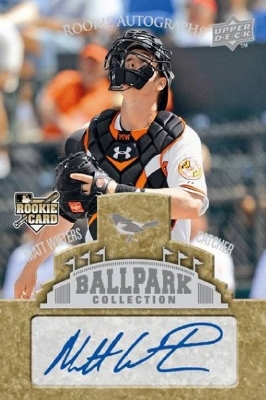 After countless years of futility and not much of a plan to speak of, the Orioles are perhaps close to a franchise resurgence. Their young core of Matt Wieters, Nick Markakis, Adam Jones and Nolan Reimold (if he’s for real) is very impressive, and Luke Scott is establishing himself at the age of 31: he’s still under contract for a while, thanks to being called up at age 27 by his first major league team, the Astros. They have some young pitching prospects coming up through the ranks as well, so if all falls into place, maybe they can keep up with the Yankees and Red Sox in the next decade. If the Rays could, why not them, right?
After countless years of futility and not much of a plan to speak of, the Orioles are perhaps close to a franchise resurgence. Their young core of Matt Wieters, Nick Markakis, Adam Jones and Nolan Reimold (if he’s for real) is very impressive, and Luke Scott is establishing himself at the age of 31: he’s still under contract for a while, thanks to being called up at age 27 by his first major league team, the Astros. They have some young pitching prospects coming up through the ranks as well, so if all falls into place, maybe they can keep up with the Yankees and Red Sox in the next decade. If the Rays could, why not them, right?
Who they should be trading: Honestly, anyone not named Wieters, Markakis, Jones or Reimold. The Orioles compete in the purgatory known as the AL East, so a “good” team isn’t going to cut it if they want to contend: they’re going to need a great team. They can definitely put together such a roster with their young core, but it’s not going to happen until 2011 at the earliest. So with that goal in mind, some hard decisions need to be made.
Brian Roberts is a perfect example of how the current state of the trade market will affect trade strategies. He’s certainly a great player to slot at second base, but he’s also 31, which means he’ll be 33 and probably on the down slope of his career by the time the Orioles are in contention. He’s due $10 million a year through 2013, which is an amount few, if any teams would be willing to take on. Baltimore had the chance to unload Roberts for premium prospects on multiple occasions and chose to keep him, missing out on a big opportunity to improve their franchise (compounding the problem by giving the guy a massive contract). Again, Brian Roberts is a very good player, but his cost and age aren’t compatible with the current direction of the team.
Beyond Roberts though, the team has a few afforable pieces to trade, such as Aubrey Huff, Melvin Mora, Ty Wiggington, Ryan Freel, Cesar Izturis and Danys Baez. All veterans with short, affordable contracts, even if their names don’t exactly scream star power. But these are the types of players who will see the most movement given how the economy has affected the trade market. Hopefully, unlike in years past (such as with Roberts), the Orioles will make the most of it, unload their veterans, and stock up for the future.
Kansas City Royals
To be honest, this one is a bit odd. If the Royals had any productive veteran bats, they’d probably have a few more wins under their belt. Their offense is just remarkably weak, so there isn’t much to speak of where trades are concerned. In most other situations I’d advocate trading a Gil Meche type pitcher, but again the contract is pretty big, and the Royals do have a fairly solid rotation. And that’s where they need to hedge their bets, so you can’t trade much from the pitching. If I’m management, I’m more or less hoping Greinke continues to be amazing, Hochevar can develop into something special, Meche can continue to provide steady, solid innings, and Bannister can remain productive as a #3/#4 slot pitcher.
With the rotation in place, if they can manage to get some productive bats one of these days, they can contend in the AL Central, which is often wide open. Much of this, as in past seasons, depends on whether Billy Butler and Alex Gordon can finally start to live up to the hype. Thus far, they’ve performed remarkably poorly compared to expectations, but they are still very young and there’s room for improvement.
Who they should be trading: I’m sure they’d love to unload Jose Guillen at this point, but I’m not sure who wants to pay the guy $12 million next season. Likely no one, so he’ll be staying put. Coco Crisp and Mike Jacobs were the team’s big pickups this past winter, and they’ve managed to lose a decent amount of their value thanks to injuries and poor results, respectively. They’re still the best candidates to be unloaded, however.
Really, I think the Royals would love to make a trade and get some prospects, they just don’t have anything of significant value. Their bullpen arms are pretty solid though (Wright, Cruz, Mahay, Farnsworth), and teams in contention always need middle relievers this time of year. Those guys don’t have massive contracts either, so they’ll be attractive acquisitions for other teams.
Finally, they could always trade a Brian Bannister type for a bat if one or two young pitchers come up and produce (taking from a strength to add to a weakness), but that’s more of a move you can make in the winter.
Cleveland Indians
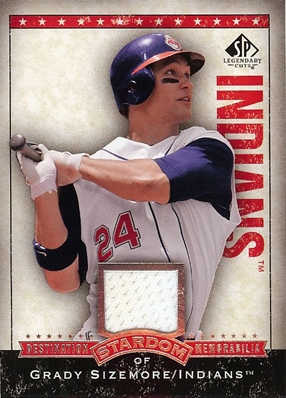 This is where the action is. The Indians are only two years removed from blowing a 3-1 lead in the ALCS to the Red Sox. Absolutely heartbreaking for long suffering Cleveland sports fans, to come one game away from the World Series and not reach it. The level of talent back then promised more opportunities, but they’ve just had difficulties getting there, coming up short since. However, Indians GM Mark Shapiro has proven to be excellent at building a contender with limited resources, and I expect he’ll be able to retain the best elements of this team to contend: if not 2010, certainly shortly after that.
This is where the action is. The Indians are only two years removed from blowing a 3-1 lead in the ALCS to the Red Sox. Absolutely heartbreaking for long suffering Cleveland sports fans, to come one game away from the World Series and not reach it. The level of talent back then promised more opportunities, but they’ve just had difficulties getting there, coming up short since. However, Indians GM Mark Shapiro has proven to be excellent at building a contender with limited resources, and I expect he’ll be able to retain the best elements of this team to contend: if not 2010, certainly shortly after that.
What makes his resources interesting to other teams right now is that his guys are still relatively young and productive, and don’t have big contracts attached to them: it’s just not the way Cleveland does business. The work has already started, as Mark DeRosa was the big catch before the deadline: the Cardinals have already shipped off hot bullpen prospect and potential future closer Chris Perez to “rent” DeRosa for half a season.
Who they should be trading: This is a really difficult question, and I’m glad I’m not in Shapiro’s shoes in having to answer it. Theoretically, this is a roster that can use a “tweak” here and there, and easily contend for a playoff spot in 2010. If that’s the case, you probably look to trade smaller pieces like Jamey Carroll, Carl Pavano (who knows, maybe a NL team with a good pitching coach can at least make him average), or maybe a slightly bigger name like Jhonny Peralta.
Or, you can make some big plays. Cliff Lee is one year removed from a Cy Young award and a remarkable season, but is only under contract to the Indians through 2010. Victor Martinez has given them the benefit of having one of the best hitting catchers of the last five years on their roster, and his contract also expires in 2010. So this puts Shapiro under a delicate balancing act: you can trade either (or both) of these guys and get a hefty package back in return to make your long term future better, but damage your chances for 2010 in the process.
Given that this roster can and should be able to contend next year (as long as they can harness some much needed bullpen productivity, which is certainly possible), I expect Shapiro will hold onto Lee and Martinez, and reassess at the 2010 deadline if they’re out of contention. That is, unless a team backs up a truck full of top prospects to Cleveland, unloads them in the lobby, and begs for the services of either premium player. If that happens, it would be hard for a savvy, forward-thinking GM like Shapiro to say no.
A’s
Oh Billy Beane. The man popularized using brains to win with a small payroll, and came pretty close to having Brad Pitt play him in a movie. Not bad for a former top prospect who only managed a .219 average in the majors.
I almost feel weird speculating on Beane’s next move, because if nothing else, he’s shown that it’s hard to predict what his next move will be. And yet, his trade deadline options are practically the most straightforward: this winter he traded for Matt Holliday, and signed Orlando Cabrera and Jason Giambi to see if his team could break through in an AL West perceived as being weak. Each player has a short, affordable contract, and should be able to net prospects in a trade.
Who they should be trading: Every position player over 26, and certainly anyone in their 30s. Beane has done a lot of posturing around Holliday, saying he may keep him on board to give his promising young pitchers some run support as they develop, in which case he’d simply pick up some nice draft picks once the slugger gets his massive contract this winter.
As if anyone believes that.
Holliday will more or less be the prized bat acquisition of the deadline, and Beane knows he can get prospects of greater value here than he would with the draft picks. Beyond Holliday, the A’s position players are nothing to write home about, so I expect demand may not be high, but they’ll listen to most offers. If someone wants Adam Kennedy or Jack Cust, why say no?
I wouldn’t be surprised if Giambi sticks around though: the A’s have routinely put a far past his prime, potential future Hall of Famer at their DH spot the last few seasons (Frank Thomas, Mike Piazza, Mike Sweeney, and now Giambi). Sometimes this results in surprisingly good production (as was the case with Thomas), but it’s mostly to get a solid, if not unspectacular bat and veteran presence into that spot for cheap. Giambi fills those roles well, even if he hasn’t produced much this year. Given that a contender will need more than what Giambi can provide at DH, I expect he’ll remain in Oakland and help the next generation of A’s players adjust to the big leagues.
Honorable Mention: Blue Jays
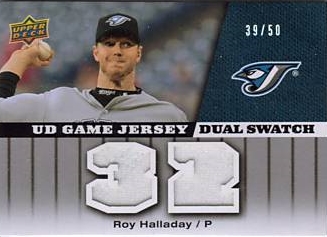 Poor Toronto fans. Their pitching over the last few years has been remarkably good, but they haven’t had the offense to match, and it’s just too difficult to get past the Yankees and Red Sox. As I write this, they’re technically in the running being 4.5 games away from the Wild Card. They certainly have the talent to make that happen, and having Roy Halladay going every fifth day definitely helps.
Poor Toronto fans. Their pitching over the last few years has been remarkably good, but they haven’t had the offense to match, and it’s just too difficult to get past the Yankees and Red Sox. As I write this, they’re technically in the running being 4.5 games away from the Wild Card. They certainly have the talent to make that happen, and having Roy Halladay going every fifth day definitely helps.
What makes Toronto worth mentioning, however, is they have an albatross of a contract weighing them down in the form of Vernon Wells. It seems like only a short while ago, 2006 to be exact, when nine figure contracts for premium baseball players were a standard. So when Carlos Beltran and Alfonso Soriano set the market appropriately, giving Vernon Wells a seven year, $126 million extension to stay in Canada seemed like a good idea at the time. Oops. If you want to see a bigger kick in the gut, the contract was heavily backloaded (coinciding with the money the team spent on B.J. Ryan, A.J. Burnett and Troy Glaus). So the payroll year-to-year for Wells looks like this:
2008: $500,000
2009: $1,500,000
2010: $12,500,000
2011: $23,000,000
2012: $21,000,000
2013: $21,000,000
2014: $21,000,000
Oof. To put this into perspective, Blue Jays payroll this year is in the $80,000,000 neighborhood. Assuming they add on a bit more by 2011 when the contract really gets hefty, Wells will take up about a fourth of the team’s total payroll. That’s a bad situation to be in with any player, but especially one like Wells who hasn’t produced at a great level since 2006. And let’s not knock the guy: by all accounts he’s a good teammate who is working hard to get his game back up, so good for him. This one falls on Blue Jays management. But you think about what you could do with that money inthe free agent market, in this economy, and it makes your head spin. This contract could very well make the difference between the Blue Jays having a chance with this roster, or never having quite enough talent to get over the hump for years to come.
Where this matters is that despite being in contention, speculation continues to mount that Wells and teammate Alex Rios are more or less available for the taking, assuming the trade partner is willing to take on a good portion of the salary. Certainly, no team is going to be willing to take this contract in full, but if the Blue Jays need to free up money to retain Halladay, they might be willing to trade Wells and pay half, if not more of his salary (similar to how the Rangers structured the A-Rod trade to the Yankees back in 2004). Rios is another story: the trade partner will probably take more of that salary on, as he’s younger, was reasonably productive the last two seasons, and only making $12m-$13m a year.
There’s your fairly comprehensive look at the AL bottom dwellers, and what they could, or at least should be up to. Stay tuned: next time, we’ll take a look at the National League.








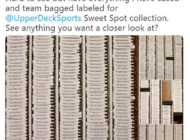
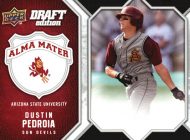
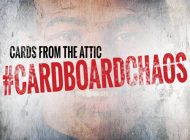






2 Comments
[…] is the All-Star game, and soon after we’ll hit the trade deadline. In case you missed it, click here to see my trade deadline preview, and my view on the American League side of things. Today, we’ll take a look at the National […]
[…] clear. A few weeks back, I went over my list of sellers at the deadline for both the National and American Leagues, and those teams are still in the same position. However, there’s one major element […]